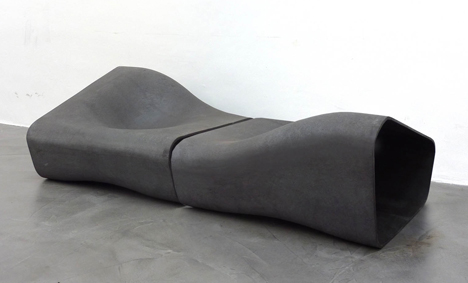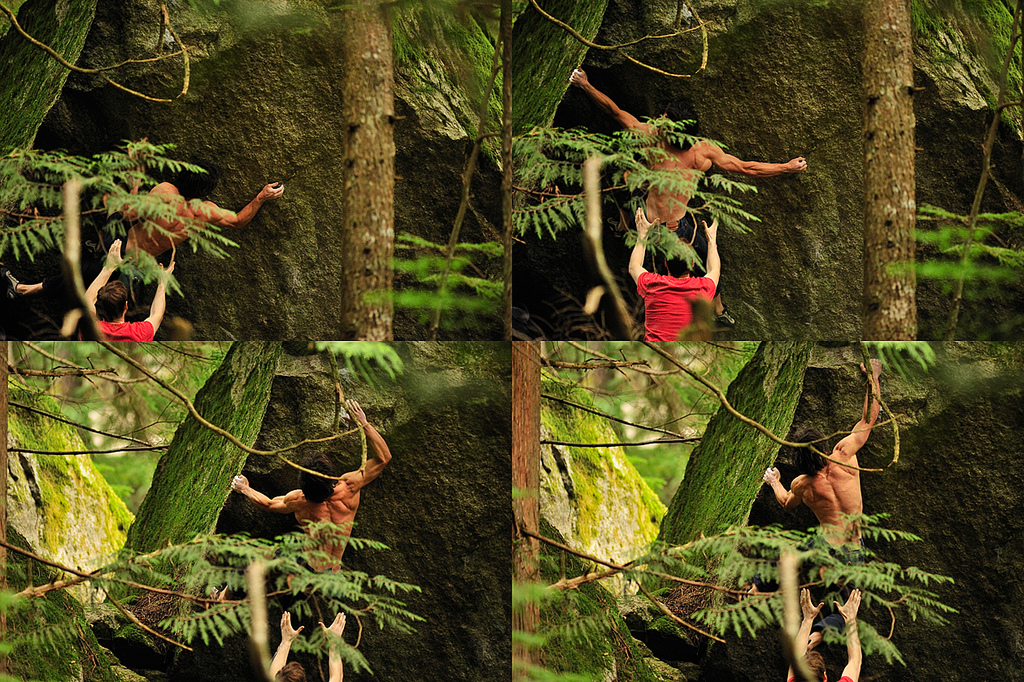Dune :: Fiber-cement objects\\furniture

Dune Chairs by Rainer Mutsch
These objects make me want a studio again. For me, any piece of furniture that can stand alone as a pure asthetic object…dopeness.

Dune Chairs by Rainer Mutsch
These objects make me want a studio again. For me, any piece of furniture that can stand alone as a pure asthetic object…dopeness.
Do I want to quit my job and do something like this?
Yes, absolutely. Who wouldn’t. Now if someone can just tell me how, I’d appreciate it. Thanks
I do wonder, is this boat really cradle-to-cradle? Don’t those water bottles break down w/ UV and exposure to ocean? Not being overly critical….it’s a vast improvement on what exists, and is much more of a eco-marketing piece, but let’s be clear, I wouldn’t consider this cradle to cradle. It is more like cradle to very slow grave.
This rendition of “Somewhere Over the Rainbow” / “What a Wonderful World” is so soulful and timeless. It sounds as fresh and contemporary today as when Israel Kamakawiwo Ole recorded/performed it in 1993. His enchanting voice and brilliant ‘Ukulele have the power to transport one to another realm. I love it.
Seth Godin has made a career of communicating those “duh” insights, as in, “that’s so obvious.” But in reality, very few people have Seth’s capacity to distill a problem or idea so readily and to express it so succinctly. It’s much the same as a person in a museum saying, “I could paint that.” But you didn’t, and in reality, you probably couldn’t.
Seth Godin: Betting On Smarter (Or Betting On Dumber).
Marketers fall into one of two categories:
A few benefit when they make their customers smarter. The more the people they sell to know, the more informed, inquisitive, free-thinking and alert they are, the better they do.
And most benefit when they work to make their customers dumber. The less they know about options, the easier they are to manipulate, the more helpless they are, the better they do.
Tim O’Reilly doesn’t sell books. He sells smarts. The smarter the world gets, the better he does.
The vast majority of marketers, though, take the opposite tack. Ask them for advice about their competitors, they turn away and say “I really wouldn”t know.” Ask them for details about their suppliers, and they don’t want to tell you. Ask them to show you a recipe for how to make what they make on your own, and “it’s a trade secret.” Their perfect customer is someone in a hurry, with plenty of money and not a lot of knowledge about their options.
You’ve already guessed the punchline–if just one player enters the field and works to make people smarter, the competition has a hard time responding with a dumbness offensive. They can obfuscate and run confusing ads, but sooner or later, the inevitability of information spreading works in favor of those that bet on it.
Dan Pink, in this informative, entertaining presentation, provides further credence to my anti-bonus argument. Studies across the globe, by top scholars in the fields of economics, psychology, and sociology all indicate that throwing excessive monetary incentive toward complex problems does not maximize positive outcomes. These studies, as Mr. Pink eloquently relays, all indicate that the best performances and the best solutions arise from humans’ natural inclination for purpose, mastery, and autonomy. In other words, create a work environment that allows people to exercise their brains, their creativity, to feel their work has a greater purpose, to feel they are bettering themselves and those around them, and to self-direct will create not only a happy, highly-productive workforce, but it will also maximize positive outcomes for your business.
8 cups a day.
8 cups a day!
2-3 servings a day. Get full from the higher volume to calorie ratio, and get tons of protein, probiotics, and healthy fats.
Save about 170 calories a serving with black coffee vs your frapalappadingdong.
Eat smaller meals, more often. Drink water. Did I mention, 8 cups a day? That will fill you up and aid your metabolic activity so your body’s engine more efficiently converts your calories to fuel, not excess baggage. Fill up on high-fiber snacks in between meals: Apples, spinach salad (skip the dressing, chump), oatmeal, flaxseeds, pinenuts.

What’s wrong with a bonus? Advocates of this method of compensation argue that a bonus rewards performance above and beyond the expected — but that is just the problem with a bonus. The message it sends is, “it’s ok to just be good, we’ll still pay you a salary and you’ll keep your job.” Are you satisfied with employees who are just good? Don’t we all want to work with people who routinely perform above and beyond expectations, who are naturally driven to achieve the best results possible? The bonus-carrot just sends the opposite message to employees – that it is ok to be mediocre. I should clarify that I am not talking about commissions, and that I don’t believe that everything is black and white – ie I am not saying rewards for great performance are bad. It is great to reward people for exceptional performance, but don’t set the bar at mediocre by building an expected bonus into the compensation package that clearly communicates ‘good enough’ is acceptable.
Instead set the expectation that performance should always be exceptional, and roll any anticipated bonus into the base compensation. Then, if an employee is not meeting those exceptional standards, reward them with a nice severance and find someone who naturally seeks excellence to fill the void. Harsh? Perhaps. But would you want anyone less than great working for you?
Beyond sending the wrong message, traditional bonuses often lead to short-sighted business decisions and ‘juking the numbers‘ just to hit quarterly bonus goals. Again, do you want to encourage short-sighted, myopic behavior, or do you want to cultivate a culture of expected excellence and long-term visionary thinking?
This isn’t really about what happens when a service disappears…it could be, but instead it’s kind of about the creative process and what happens in the space between the present and the future, in a very non-committal, not fully flushed out, Gen-Y sort of way.
MixWit used to offer a killer service allowing users to create custom “mix tape” widgets that could then be posted around the web. Unfortunately the site / service died back in 2008 and now I have way too many old mixtape posts that are just permanently borked. It feels something akin to when I just moved into my first post-college apartment after dirtbagging around the country for almost a year, only to discover, upon unpacking, that all of my boxes of CDs and mixtapes were lost somewhere along the way. We all survive that great disaster, but something is lost that will never be recovered. A mixtape, or a blog post, or much of what we humans do creatively, for that matter, is a spontaneous act that captures and distills a moment in time. It can’t be recreated…you can try, but it won’t be the same.
A painter acquaintance from NY would always say, “if you can’t do it again, it was never yours in the first place.” I’m never sure I fully agreed with that — I understand where he is coming from, but making –anything — is a mixture of skill, distillation of experience, intuition, and — perhaps the most important element — translation of the immediate. Whether we like it or not, there is always a response to the present condition(s) that gets translated into the canvas upon which we work.
When top advertising creative directors searched for their own names on Google they saw an Google AdWord ad by Alec Brownstein asking them for a job. It led to interviews with four of the people he targeted and two of them offered him a job.
[via LaughingSquid]
Next,
Stay updated on my meandering thoughts & activities via RSS (Syndicate).

Compression Plugin made by Web Hosting